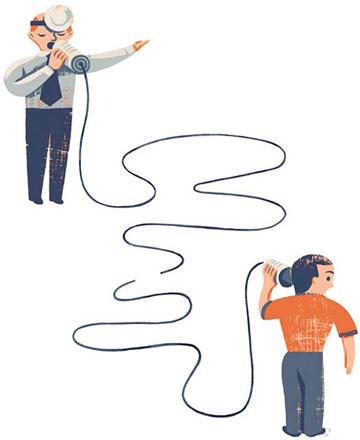You are here
Minor foot wounds a major threat for diabetics
By Reuters - Apr 13,2014 - Last updated at Apr 13,2014
NEW YORK – For people with diabetes, one foot ulcer is very likely to lead to another, according to a new study that finds even minor lesions create a major risk of more severe foot wounds.
The best defence, Dutch researchers say, is to treat even minor sores carefully and to protect feet from pressure and injury with specialised footwear.
“I hope medical specialists and other healthcare practitioners will use this knowledge and implement it in clinical practice,” said senior author Sicco Bus, staff scientist with the Academic Medical Centre at the University of Amsterdam.
People with diabetes often lose feeling in their feet as a result of nerve damage, known as myelopathy. The lack of sensation makes diabetics prone to injure their feet without realising it, and allows small wounds to grow into serious ulcers that can eventually lead to infection or gangrene.
In the US, 26 million Americans have diabetes. Every year, 65,700 of these patients have lower-limb amputations.
Past research has shown that having had a foot ulcer is a significant risk factor for having more of them.
“Ulcer recurrence is a debilitating condition for the patient, risking further complications such as infection and amputation, and influencing loss of patient mobility and quality of life,” Bus told Reuters Health.
To find out what factors most strongly predict who will develop foot ulcers, Bus and his colleagues analysed data from a large trial of specialised footwear for diabetes patients with nerve damage in their feet (see Reuters Health article of January 24, 2013 here: reut.rs/1ewrG4F).
For the new analysis, the researchers focused on 171 participants, all of whom reported having a foot ulcer at least 18 months before the study began. For a period of 18 months, each person was checked for new ulcers every three months, and interviewed about their daily habits.
The pressure on their feet while walking barefoot and in the special footwear was also measured. During one week, sensors in the shoes reported how often the participants wore their shoes and how many steps they took.
During the study period, 71 people developed ulcers on the soles of their feet, 41 of them as a result of unrecognised “trauma”, Bus and his colleagues report in the journal Diabetes Care.
Among those 41, the people who had minor lesions when the study began were nine times more likely than those who didn’t to develop an ulcer. Often the wounds were in the same place as a previous ulcer, suggesting there was ongoing pressure or injury happening at that spot, according to the researchers.
Patients who wore shoes customised to the pressure points of their feet, however, had a 57 per cent lower risk of developing a new ulcer compared to those who didn’t.
Currently, to prevent ulcers, doctors and nurses have to check the feet of diabetic patients every day for wounds or use specialised tools for determining pressure points that might be prone to blisters.
“Some diabetics wear wounds on their feet kind of in the same way that a person might wear a hole in their sock, but for a diabetic, this hole gets infected and often leads to an amputated foot,” Dr David Armstrong, a professor of surgery at the University of Arizona, told Reuters Health.
“Myelopathy is a massive problem, it’s silent, and it doesn’t hurt, even in instances of gangrene. It’s no one’s fault, but no one pays attention to it. This study opens up avenues for prevention,” said Armstrong, who was not involved in the research.
The protective effect of customised footwear seen in the study highlights the benefits of personalised healthcare in high-risk patients, noted Dr Lawrence Lavery, a professor of surgery at the Texas A&M Health Science Centre College of Medicine and the Scott and White Memorial Hospital in Temple, Texas.
Private insurers will have to step up to pay the expense, Lavery said. “This is something that is well worth investing in.”
Related Articles
AMMAN — A local centre is employing the “latest technology” in stem cell therapy to benefit patients from Jordan and abroad, with the aim of
When patients misunderstand commonly used medical terms, communication and decision making may suffer, UK researchers say.In a survey of Lon
AMMAN — On the occasion of World Diabetes Day, which annually falls on November 14, and to complement the campaign "avoid the 100" of 2021 a



















